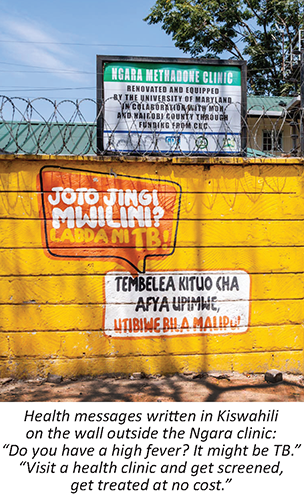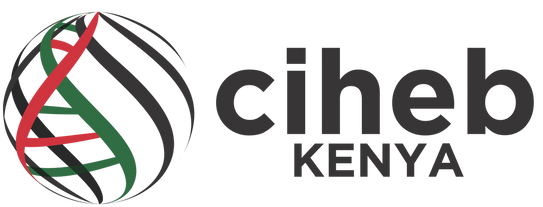 The success of Mathari led to the opening of a second clinic in 2017 at the Ngara Health Centre in northern Nairobi, which has a maternity wing. “Ladies coming into the program were expressing a desire to get pregnant,” explained Dr. Tina Masai, clinical psychologist and MAT specialist. “And because they are no longer using heroin, they are more likely to get pregnant.” The Ngara clinic has had 11 successful term deliveries since it opened (Mathari has had 31). Out of the 42, only four neonates had neonatal abstinence syndrome, and this low number can be attributed to the mothers being on methadone treatment at the time of delivery.
The success of Mathari led to the opening of a second clinic in 2017 at the Ngara Health Centre in northern Nairobi, which has a maternity wing. “Ladies coming into the program were expressing a desire to get pregnant,” explained Dr. Tina Masai, clinical psychologist and MAT specialist. “And because they are no longer using heroin, they are more likely to get pregnant.” The Ngara clinic has had 11 successful term deliveries since it opened (Mathari has had 31). Out of the 42, only four neonates had neonatal abstinence syndrome, and this low number can be attributed to the mothers being on methadone treatment at the time of delivery.
Overall, the two clinics have enrolled 2,262 clients. As of January 2021, 1,137 were receiving daily treatment, and 111 have been entirely weaned from treatment. The clinic has achieved viral suppression rates of the clients living with HIV above 95%. “PWIDs really become more stable when they're put on MAT,” said Patrick Eshikumo, Ciheb HIV prevention specialist. “Methadone treatment has produced good treatment outcomes for ART.” Treatment of hepatitis C has been similarly successful, with a 98% cure rate.
Improved psychosocial outcomes are key indicators for assessing the impact of MAT interventions. Of the key psychosocial indicators tracked, MAT has been shown to improve family and community reintegration, stable accommodation, and employment. MAT interventions have also seen a decrease in incidences of violence, as well as crime.
Of note is an increase in unemployment over time for those who have been on treatment for a longer duration. This highlights the need for sustainable livelihoods in order to further enhance client wellbeing.
